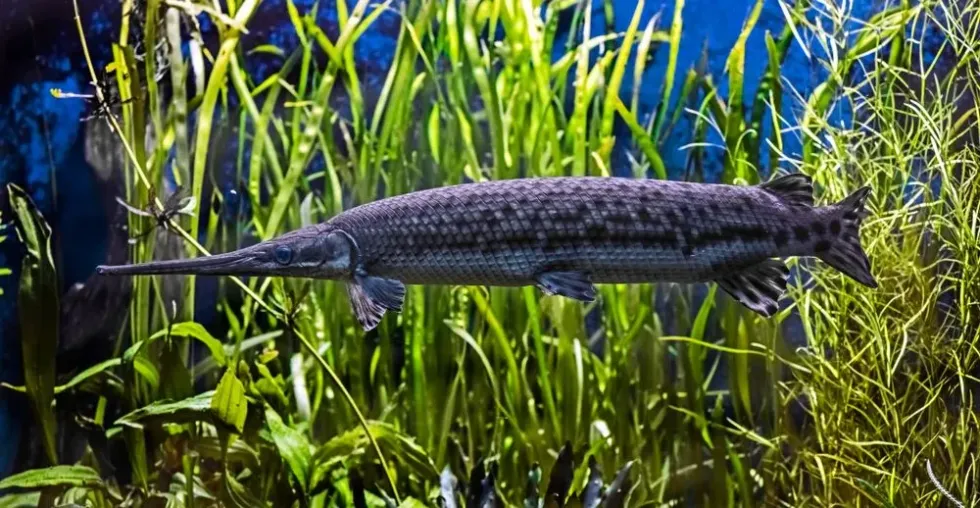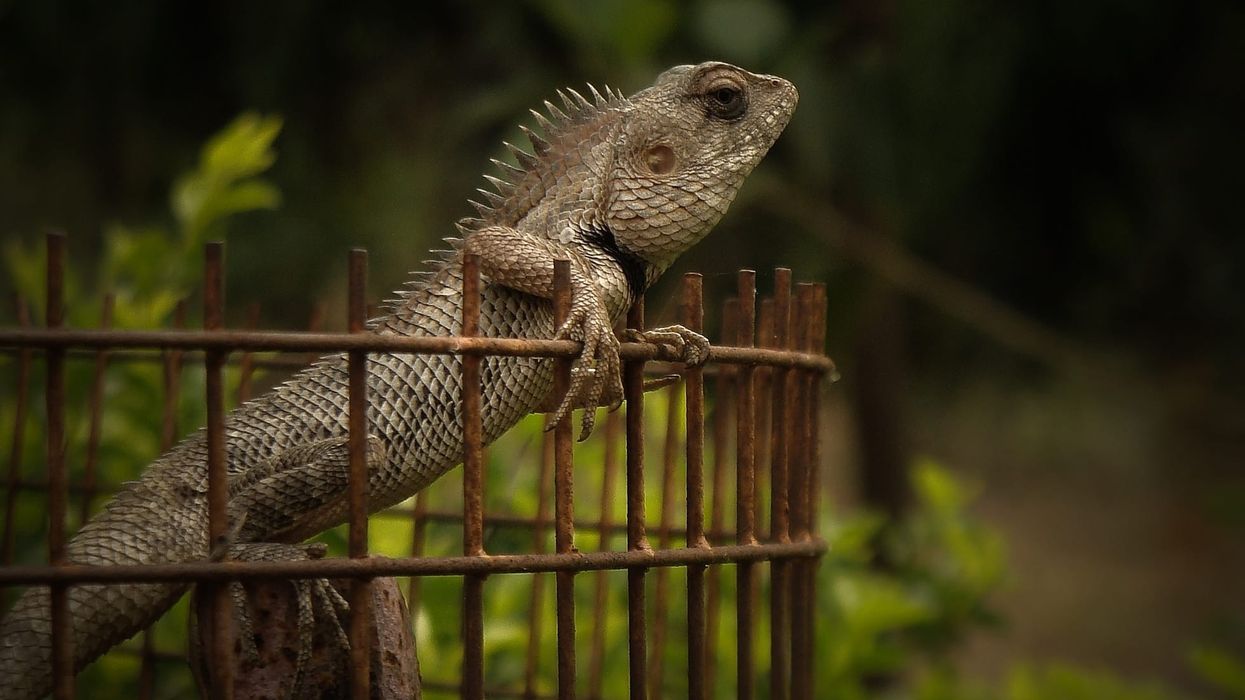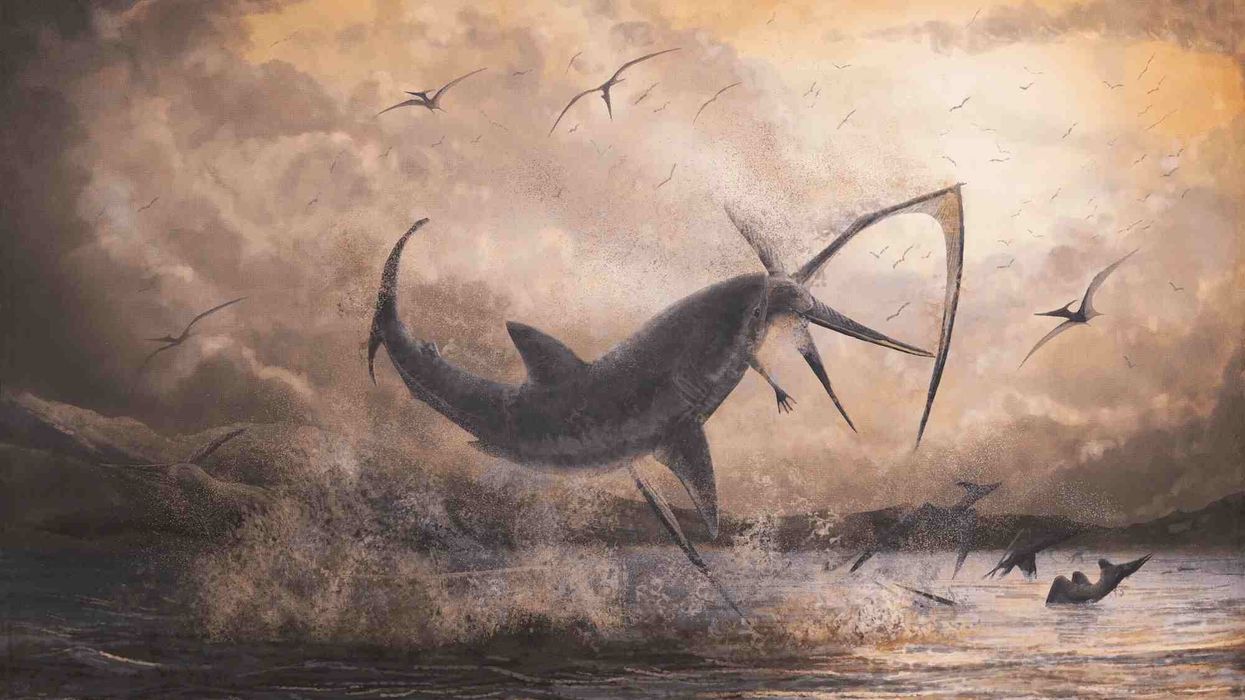The Longnose Gar (Scientific name: Lepisosteus osseus) was first depicted via Carl Linnaeus in Southern America in 1758, who gave it the name Esox osseus. The name Esox, which belongs to the pike genus, was subsequently changed to Lepisosteus, which is the slender Gars genus.
Lepisosteus osseus (Linnaeus, 1758), the logical name for Longnose Gar, started by merging lepis (Greek for scale, and osteos), meaning hard in Latin. Osteros references the bone-like, rhomboidal-molded ganoid scales that protect the gars from predation.
Both males and females have sharp teeth and snout that you can see as they are coming up from the freshwater lakes for air and oxygen.
This fish is widely distributed throughout the surface of lakes and water, which consists of some vegetation. The males have a long tail and use their swim bladder and fin for swimming fast.
If you find this article interesting, check our other articles on hammerhead shark or eel.
Longnose Gar Interesting Facts
What type of animal is a longnose gar?
The Longnose Gar (Lepisosteus osseus) is the most spread out species in waters. Gars are essentially freshwater fish that occasionally venture into saltwater or brackish water.
What class of animal does a longnose gar belong to?
The Longnose Gar (Lepisosteus osseus) belongs to the Actinopterygii class of animals.
How many longnose gars are there in the world?
There is basically no information on Longnose Gar (Lepisosteus Osseus) populace numbers and patterns. But it is known that they are abundant and are categorized as Least Concern by the IUCN.
Where does a longnose gar live?
The Longnose Gar is capable of living well beyond 17 years and up to 22 years. These fishes are widely distributed across various regions of North America and have been found in the Gulf of Mexico, the Rio Grande, and surprisingly in waters towards the northern district of the United States.
Waterway bowls in Texas, Michigan, and Wisconsin are generally prime environments for these fish. They also sometimes enter the saline waters of the Perdido Bay (Florida and Alabama), Mobile Bay (Alabama), and Mississippi Rivers.
What is a giant longnose gar's habitat?
Speaking of their habitat, Longnose Gar, also known as Billy Gar, range all the way from Canada right down to Florida. About habitat, Longnose Gar inclines toward slow territories of waterways, lakes, reservoirs, and estuaries. They can also live in brackish waters.
Sometimes they are found to be dwelling in saltwater. However, it isn't their favorite environment. Mainly, the Longnose Gar habitat flourishes in freshwater areas.
Who do longnose gars live with?
Longnose Gars live in schools like other fishes to protect themselves from predators.
How long does a longnose gar live?
The young male Gar develops at 3-4 years of age, while females develop at six years of age. The Longnose Gar are easily able to live for up to 20 years.
How do they reproduce?
The mating and breeding period for these fishes begins in April, covering the end of spring and all the way up to June, to the beginning of summer. They mate in shallow and weedy freshwater and also in territories that have fast-flowing streams.
Before the mating cycle begins, the male approaches the female in April. Nonetheless, there are in some cases fifteen males and only one female.
When the female chooses their mate, they will go to untamed waters to mate and lay eggs. Females lay sticky, green eggs secured by a toxin that is capable of killing certain creatures and people upon contact.
Every year, the female lays around 30,000 eggs. Even though the parents will pick a nursery region, they don't deal with their eggs after they are laid.
What is their conservation status?
The conservation status of the longnose species of gars of North America is Least Concern, according to the IUCN Red List.
Longnose Gar Fun Facts
What do longnose gars look like?
As the name suggests, the Longnose Gar has a long, round, and hollow body with narrow jaws and hard, diamond-shaped scales. It is a fact that they can have a grayish tint, and sometimes they develop a tint of olive green, especially beyond the jaws.
A few varieties can be earthy colored or dark, yet the size and shading essentially rely upon where they reside. These fishes have hard diamond-shaped scales everywhere and have dim spots on their tail, backs, blades, and on the sides of their bodies.
It has a long, thin, mouth-like snout with sharp teeth. These fishes will develop to around four feet; however, the territory of these fish will decide how long they grow.
How cute are they?
Longnose Gar-fish, judging by their appearance, do not look cute.
How do they communicate?
It hasn't been researched officially how the Longnose Gar communicates. They live with groups of their own and sometimes with other species like the shortnose gar.
How big is a longnose gar?
Longnose Gar size can grow up to 728-48 in (71-120cm) in length.
How fast can a longnose gar swim?
The speed at which a Longnose Gars swim is about 1.9 times its body length. Longnose Gar is ray-finned, and they use their fin and swim bladder to swim at high speeds to escape predators.
How much does a longnose gar weigh?
The Southern American Longnose Gar weighs 2-7 lb (1-3 kg). The Longnose Gar record of the biggest catch was about 6 ft (180 cm) in length and 55 lb (25 kg) in weight.
What are their male and female names of the species?
There are no Longnose Gar scientific names for male and female species.
What would you call a baby longnose gar?
Longnose Gars don't have a specific name for their babies.
What do they eat?
The Longnose Gar diet includes little fishes and shellfish. Since they are carnivores, these fishes often enjoy eating menhaden, sunfish, and roost. However, in shallow water, they do not need to put too much effort into catching their prey. They just lay still under gravel until their prey cruises by the surface, snatching it abruptly.
Are they dangerous?
Because of their enormous sharp teeth, the Longnose Gar poses a threat. It is crucial to take all possible precaution to avoid any bites or cuts when handling these fishes. Besides that, their eggs are also toxic to humans, and we should avoid eating Longnose Gar eggs specifically.
Would they make a good pet?
While there are no affirmed assaults on individuals, but the Longnose Gar is still dreaded by many. Along these lines, Longnose Gar won't eat things they can't swallow.
The only possible time these gars present risk to humans is when fishermen attempt to drop into shallow waters and deal with these huge, amazing fishes.
Despite their non-aggressive behavior towards humans, they cannot be good pets.
Sure, you can keep them in a large tank, but the qualities that a pet might bring to your life might be absent with these fishes. Unless you are particularly looking to fill your aquariums with these fishes, in which case they are easy to raise as their diet and care routines are simple to follow.
Did you know...
They are primitive beings and have been on the earth for 100 million years. Longnose use their gills effectively to take in oxygen from the air.
Female Longnose Gars are normally longer in length than male Longnose Gars.
One of their dorsal fins is situated close to the furthest limit of their backs.
These fish don't succumb to any run-of-the-mill creatures that are found in lakes and freshwater streams they live in. They have unfathomable protection against other fishes because of thick scales that cover their whole body.
Longnose Gar teeth are very sharp and can cut and bruise humans if they're careless around them or stamp their tails when they're under gravel.
Longnose gar fishing
Perhaps the best Longnose Gar bait would be the crankbait. These kinds of bait are ordinarily utilized for bass, yet they can carry out the responsibility very well for Longnose Gar as well.
The draws are normally three to four inches in length, and in a perfect world, they should run just underneath the outside of the water for the greatest viability. People usually catch these fishes in order to make a Longnose Gar aquarium.
Anglers who search for these creatures regularly will zero in on regions with a ton of brush, vegetation, and shallow waters. One snare can possibly gather a few gars all at once.
Is longnose gar good to eat?
Yes, Longnose Gar is good to eat. When cooked appropriately, the meat might be coarse yet will offer copious amounts of protein. A Longnose Gar recipe is not difficult to prepare, and you can certainly add a variety of ingredients to bring the flavors you wish to your dish.
Here at Kidadl, we have carefully created lots of interesting family-friendly animal facts for everyone to discover! Learn more about some other fish including tetra, or milkfish.
You can even occupy yourself at home by drawing one on our longnose gar coloring pages.










